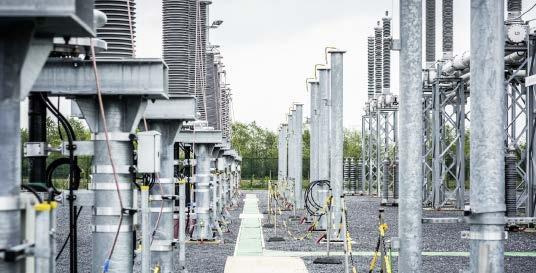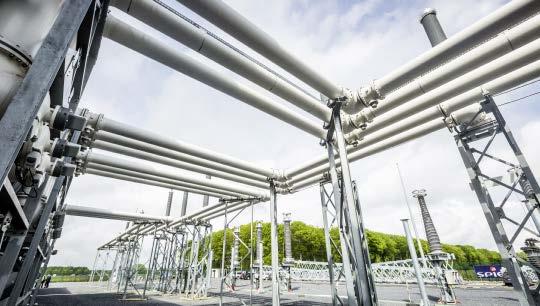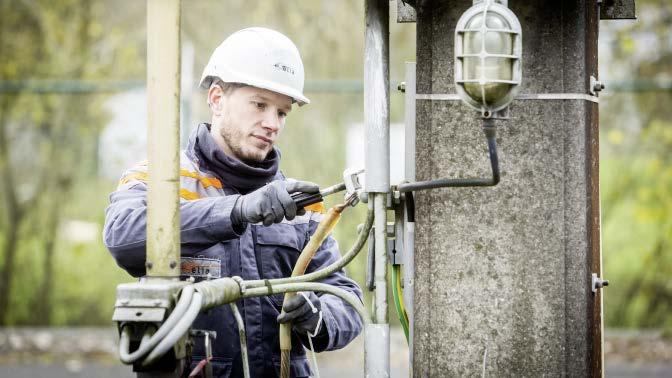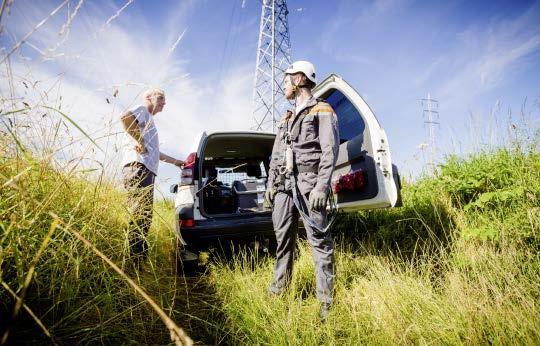
3 minute read
3.1.3. Adequacy simulation
The methodology used is largely inspired from the study on volume determination of the Strategic Reserves performed each year according the Belgian Electricity law. It is detailed in Chapter 2 (pages 21 to 36) in the latest report on the need for Strategic Reserves for winter 2017-18 [ELI-11]. A brief summary of the methodology is described here. An adequacy simulation consists of the hourly simulation of a large amount of ‘Monte-Carlo’ years also called ‘future states’. Each future state is a combination of: — Historical climate conditions for temperature, wind, sun and precipitation. These data are used to create a time series of renewable energy generation and consumption by taking into account the ‘thermo-sensitivity’ effect, see
Section 2.4.1.3. The correlation between climate variables is retained both geographically and time wise. For this reason, the climatic data relating to a given variable (wind, solar, hydroelectric or temperature) for a specific year will always be combined with the data from the same climatic year for all other variables, see Figure 70. This rule is applied to all countries in the studied perimeter; — Random samples of power plant availability are drawn by the model by considering the parameters of probability and length of unavailability (in accordance with the ‘Monte-
Carlo’ method). This results in various time series for the availability of the thermal facilities for each country. This availability differs in each future state. A time series for the power plant availability will be associated to an historical ‘climate year’ (i.e. wind, solar, hydroelectric and electricity consumption) to constitute a ‘Monte-Carlo year’ or ‘future state’. Each climate year is simulated a large number of times with the combination of random draws of power plant availability. Each future state year carries the same weight in the assessment. The LOLE criteria are therefore calculated on the full set of future states. The market model used to perform the adequacy simulation (ANTARES) is the same as the one used for the market outputs (see Annex 7.3.3 for more detailed information). The main differences between adequacy simulations and market simulations are: — The amount of future states: The adequacy study simulates the climate dataset several times with a different unavailability draw for each future state in order to obtain enough accuracy on the LOLE indicator. The market simulation simulates the set once with different unavailability draws for each future state; — The output analysed: The adequacy simulation looks only at the moments of structural shortage while the market study derives economic, sustainability and dispatch data.
What is the “Monte-Carlo” method? More information available on Annex 7.3.1.
GENERATION OF A 'MONTE-CARLO' YEAR (FIG. 70)
Climate conditions based on 34 historic years Thermal unit availability based on probability parameters
Selection of year 'i' based on the same climatic year
year i year i year i year i
34 wind time series 34 solar time series 34 hydro time series 34 load time series
A 'Monte-Carlo’ year
Random selection from a large set of availability thermal time series
Hundred thermal time series (available thermal capacity)
N future states (or 'Monte-Carlo' years)
BOX 10 - MODEL’S VARIABLES
The wind, PV and temperature data related to each variable are the ones used by ENTSO-E for adequacy and market studies.
MODEL'S VARIABLES (FIG. 71)
Sunshine hours, temperature
Hourly wind speed
Monthly hydraulic production
Daily temperature
Probability and duration of failure Hourly solar production
Hourly wind production
Hourly production decided by the model by minimising the cost of the system
Random selection of the daily availability by the model
The climatic variables are modelled on the basis of 34 historical years, namely those between 1982 and 2015 [ENT-2]: A set of 34 time series of correlated temperature (used in order to add the thermo-sensitivity effect to the demand), wind and solar generation are used to perform the simulations. These data are provided by the ENTSO-E Pan-European Climate Data Base (PECD). The hydroelectric power generation data are based on historic generation values from each country for the years 1991 to 2015. The data from 1982 to 1990 are reconstructed on the basis of historical precipitation data for each country (based NCDC data [NCD-1]). Note that hydro modelling in ENTSO-E studies takes only three hydro years into account for each country (normal, wet and dry). Finally, a random draw on the thermal generation facilities is performed based on historical availability rates: Availability rates for the Belgian thermal generation facilities are based on an historical analysis of the years from 2006 to 2015 (as defined in the Strategic Reserves volume evaluation report [ELI-1]). For the other countries, unavailability parameters from the ENTSO-E studies or from bilateral contacts are used.







